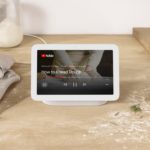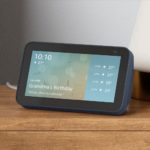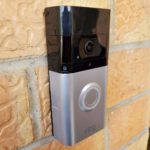If you’re new to smart speakers then it’s very easy to fall into the trap of only using it for some basic features. If you’re one of the many lucky recipients of your first smart speaker (or screen) during the Christmas festivities, we’ve got some suggestions to get the most from your new toy.
Connect your streaming services
One of the joys of smart speakers is the ability to start your streaming services on a whim. Whether it’s streaming music or video services like Netflix, Amazon Prime, Disney+, Podcasts or one of the plethora of other services.
The pathway to completing this will differ slightly depending on whether you’ve picked up an Assistant or Alexa based device. They’re both pretty simple to setup and follow a simple formula:
- Open the app (Alexa or Google Home)
- Select the service you want to add
- Enter your username and password
Adding your accounts to your smart speaker means you’ve got instant access to your streaming media of choice.
Explore: There are fun features and integrations that can be of use daily or entertain you
There’s a lot of features, games and (for Echo devices) “skills” that your smart device will have that aren’t immediately evident. Some of these are integrations with other hardware like home security devices, smart home automation equipment or simple conveniences like lighting.
Have a think about what you might like to do with your smart home, automation and integration. If you’re not sure where to start, retailers like JB Hi-Fi have sections on their site dedicated to devices that work with Alexa or Google Assistant to start you on your journey.
If you’ve got a screen vs speaker only, then there are even more options available to you. Options like “cook along” tutorials via YouTube and other mediums, you can watch streaming options wherever your screen may be and have real-time notifications pop up should you have a compatible doorbell or security camera.
Outside of those functionality applications, there is so much that both Alexa and Assistant can do. My kids have a remarkable talent for unearthing the noisiest and most annoying games possible on their speakers, many I wish would appear on killedbygoogle.com
The limit to what you can achieve with your smart devices is really only limited by your imagination. I would suggest though, you learn from my mistakes, avoiding a multi-manufacturer system and the financial trap of ongoing subscriptions.
Remember: They’re not just fun, they’re functional so try routines
You can have as many routines as you like and make them as simple, or complex as you like. They can be as simple as a morning routine to play news clips from your chosen providers, give you the weather and a rundown of your calendar. Or more complex routines involving third-party integrations with items like blinds, garage door openers or even lighting.

I have a routine set up for my daughter’s bedtime: This allows her some reading time, a warning before lights out then lights out. I have one for mornings (as above) and one for when we’re leaving the house which turns all items connected to our smart home off.
Much like the integration and games, what you can achieve through routines is only limited by your imagination and willingness to experiment. Give it a go, there’s nothing to lose and if a routine doesn’t work you can easily delete it.
There is so much that smart technologies are capable of delivering to us with every user being different. Ultimately, the point of this article is to hopefully help you start thinking big picture about what you could do, now what’s immediately obvious. So try it out, have fun and good luck.








How much use are these ‘smart’ IOT speakers and screens, for your normal routines, if you still have no need for or use of, the ‘assistants’ systems which underpin the ‘smart’ IOT devices?
This article has all to feel an advertorial. Spruiking up big, all the new and wonderfool generalized things these ‘assistants’ “Could Do For You!” All the while the article being lighter than featherweight, on real practical ways to make a ‘smart’ IOT device you might have copped, actually do anything useful.